When selling a business, there is much more up for negotiation than just the purchase price. We believe that a well-informed seller is better equipped to make the right choices for themselves and their business. This is the first in a series of blogs dissecting the structure of business deals.
When a buyer wants to purchase your business, they will present an offer document. This document is called an “Offer for Purchase” or “Letter of Intent,” and it will include much more than just a number. Beyond the offered purchase price, the document will include proposed payment terms, conveyance of assets, legalities like non-compete agreements, post-closing transition period, and more.
Business owners will benefit from understanding as many of these elements as possible. We will begin our series with a look at various payment terms you may find in the structure of a business deal.
Negotiating Payment Terms & Deal Structure
The purchase price of a business can be broken down into a few main categories.
Cash at Closing
Cash at closing is exactly that: it is payment the seller receives at closing. The most desirable and straightforward option for a seller would be to receive the entire purchase price in cash at closing. However, if that is not possible, part of the purchase price can be paid in cash, and the remainder can be paid using other methods, including those described below.
Seller Notes
A seller note is a form of seller or owner financing, allowing for a portion of the total purchase price to be paid over time. Since the great recession, we have seen most deals include some form of seller participation. The buyer and lender believe this helps keep the seller interested in the success of the business long after the sale is complete.
In some cases, seller notes can start being paid 30 days after closing. It is important to note however that when an SBA loan is involved, the SBA lender may require the seller note to remain on standby for one, two, three, or in extreme cases, the full ten years of the SBA 7a loan. This means the buyer cannot start making payments on the seller note until the standby time has elapsed, but interest on the seller note will still begin accumulating from day one. It is also normal for the seller note to be subordinate to the lender who will have the first position as a lien on the assets. Ideally, you still have the personal guarantee from the buyer though.
Earnouts
An earnout is another option for paying part of the total purchase price over time, but with some critical differences. Instead of making set payments over time like a seller note, earnouts mean the buyer makes payments to the seller only when and if the buyer achieves certain results. This often is used to bridge the gap between the market value of the business and the seller’s “want” price.
When a buyer’s perception of the business or market doesn’t match the seller’s projections, an earnout can help close the deal; but, overall, Viking is not a fan of these. Earnouts can be tied to just about any number or percentage of a number in the business (revenue, gross margin, net income customer retention, customer growth). It is important to understand that if you do accept an earnout, it is always best that you have as much control of reaching that number as you can.
As mentioned above, one of the best ways to make the right decisions when selling your business is to be informed. Ultimately, you as the Seller will decide to accept, reject, or negotiate parts of the offer. At Viking, in addition to guiding business owners through even the earliest stages of the selling process, we meet with our clients to explain and discuss the various components of specific offers and provide our expert opinion and guidance to help them make the decision that is right for them. If you are considering selling a business or have questions about the process, contact us for a complimentary, confidential consultation.

